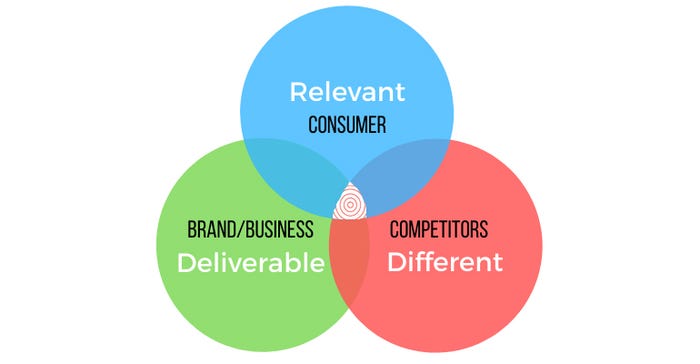Marketing strategies to drive effective quality of voiceMarketing strategies to drive effective quality of voice
Understanding effective quality of voice—using creative storytelling and targeting the right audiences—is essential to a brand's success.
March 27, 2022

We now exist in an omnichannel world, where audiences live, breathe and consume products and services across multiple channels, seamlessly moving from one to the next with fair expectation of a similar experience across each. Brands that deliver valued storytelling across the channels their customers prefer are the brands that are marketing effectively.
The question is, how do we achieve success and how do we measure it?
In my experience as the founder and CEO of The 6AM Agency, benchmarking marketing and communications strategies against an 'effectiveness' measure is key to driving commercial success. We call it effective quality of voice (EQOV). Effective communication today should be interesting, valuable to the consumer and crafted smartly enough to cut through the hyper-connected, multi-channel noise the consumer navigates.
Algorithms are a new audience set
EQOV must be able to stand up to the stealth of algorithms to cut through and surface to the top of the news agenda of the day. We consider algorithms to be an audience set on their own, with whom brands vie for attention.
Standing out and being noticed is necessary, but it's just the first step. EQOV should also stimulate a person to feel something so they have an affinity with your brand, its offering and its purpose. This affinity must develop swiftly through multiple connections and, importantly, at that critical moment of brand consideration. When a consumer is thinking of purchasing a product or service, they must be aware of your value proposition, but that's not enough. They must also have an open mindset or a sense of connect toward your brand. That affinity drives a buying decision.
Plan and execute the requirements of EQOV
How do we plan and execute for these essential requirements of effective quality of voice? There's no one-size-fits-all answer, but here are a few perspectives which we find helpful:
Consider your customers' journeys over time to understand where they show up, what time and what channel. There is no point in shouting from the rooftops about a brand that is not in the suburb where the core customer exists.
Find the intersection of deliverability. What can the brand realistically deliver?
Make the messaging relevant. What messaging can the brand authentically claim? Is the positioning a natural fit for the brand, or is it so far removed that it becomes irrelevant to the brand's core proposition?
Choose distinctive positioning for the brand. What differentiates it from its competitors?
Understand each stage of the customer journey
Success in marketing depends on a strong understanding at each stage of the customer journey: What desires (primary drivers) and obstacles (primary barriers) are shaping their behavior?
The answers to these questions are essential:
Who are your brand's customers?
Where are your brand's customers playing? Where is their attention directed?
What are your customers thinking and feeling? What is their goal at each relevant stage of their journey?
How do different types of content affect customers at various touchpoints of their journey?
These answers provide a practical conceptual framework for setting creative challenges in our communications. Given who they are, what they want and what's in their way, what action should we take to intervene and ultimately help?
Combining the three dimensions of effectiveness
Relevance, difference and brand position are three key dimensions of effectiveness. A sound approach for driving EQOV requires creativity, but creativity needs to be directed by the aforementioned key principles. The output is a what we call a precise idea.
Relevance: What does the audience care about and what will resonate with them emotionally?
Difference: What is expected and common in the activity of competitors, and how can we stand out?
Brand and business: What can we say, do and promise authentically, credibly and actually deliver on?
If your ideas meet two criteria but not the third, this will help direct your idea development. What will make it more relevant? What will make it stand out more? And what will make it more in line with your brand and business?

Ask the hard questions to sharpen your focus
Rigorously interrogating each activity will help you clarify what it's intended to do so you can evaluate if the activity will likely achieve that goal. We've found the following questions useful:
Are you growing brand share or market growth?
A market leader may need to grow the category by bringing new people into it – while defending against competitors taking your share.
A challenger may find an opportunity in taking share from larger players in the category.
What action do you expect your audience to take?
Has your audience tried your brand before?
Are you driving a first-time trial of our products or are you hoping to drive frequency or cross-sell to an existing customer?
Do you want to create an emotional or a rational attachment with customers?
Is the target audience making a rational choice or an emotional one?
If emotive imagery obscures the functional difference of your product or service, functional benefit messaging will deliver better results.
In a more commoditized market with less differentiation, emotive connection to the brand will deliver better results.
There is no silver bullet for effectiveness to replace taking the time to think critically and explore creatively. But considering your customer's journeys towards purchase; the three dimensions of relevance, deliverability and difference; and interrogating your activity to maintain focus will improve your efforts.
You May Also Like



